drawing book rec
A couple of weeks ago I borrowed Drawing and Painting Fantasy Beasts by Kevin Walker from my library (or rather the German edition of this), and I found it quite useful and interesting overall. Basically it's just a bunch fantasy creatures drawn as examples, but each creature comes with about four pages of step by step process description of the techniques used, and the different sketches and stages that went into the final work.
Initially I got it because I had never painted with acrylics, but generally found hobby painting books about acrylics my library had rather useless and boring. I mean, it's not that painting with some new medium was like repairing a motorcycle or any of the other things for which you really need either direct instruction or a book rather than just muddling along, and there's only so much variation to the theme of "you put color pigment on a surface" anyway, but this book has a neat introduction section that just lists different techniques with a little picture of how it looks, which makes it easier to try things than unguided trial and error and I'm lazy like that. Also I wanted to do dragons anyway, and this has examples of fantasy art done with acrylic paint (other techniques too) with step-by-step pictures, so that seemed like a good match.
The first part of the introduction is just the usual list of drawing and painting materials, and rather pointless. Frankly I wonder why nearly every such book feels the need to recap materials in a generic manner at the start. I mean, if you pick up a specialized drawing book you are most likely aware that there's a difference between watercolors, gouache, acrylics and oil paint, and that pastel chalk is different from oil pastels and so on. It's not that I haven't picked up some useful general info from skimming these chapters, because every now and then one will mention something I hadn't know of before, but overall I find them superfluous. Still, the list introducing the materials used is only four pages in this book, so it doesn't dwell, and then the introduction gets more specific with the neatly ordered examples of actually using the materials.
The main part is sections with fantasy beasts sorted by regions in which they supposedly live, and realized in a variety of techniques, both traditional and digital, though most involve acrylics or acrylics mixed with other media. I suspect that if you are already really experienced this book won't tell you much new, but since I've only started using acrylic paint it was useful to have illustrated examples like this for achieving different effects and textures, and getting ideas on what to do, though I have only tried a couple so far.
I've scanned a couple of pages to give you an idea of the way the process descriptions and illustrations look like, though obviously if you don't speak German the text of these scans that explain what was done in each step won't do much for you.
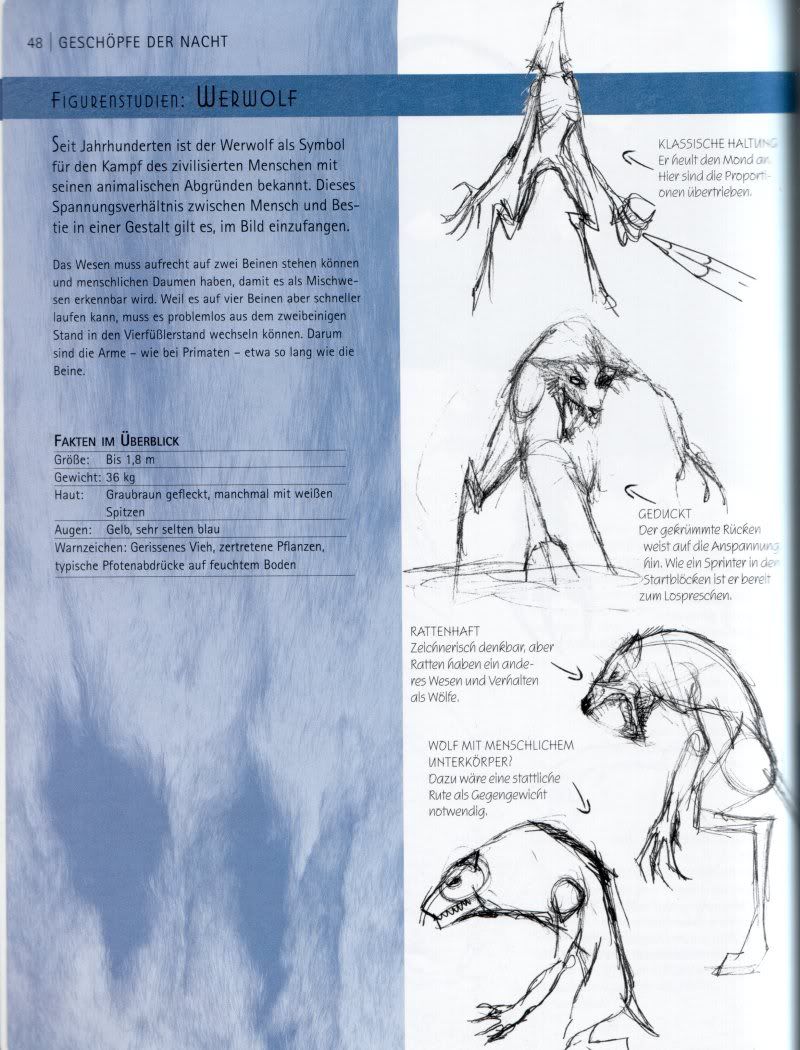
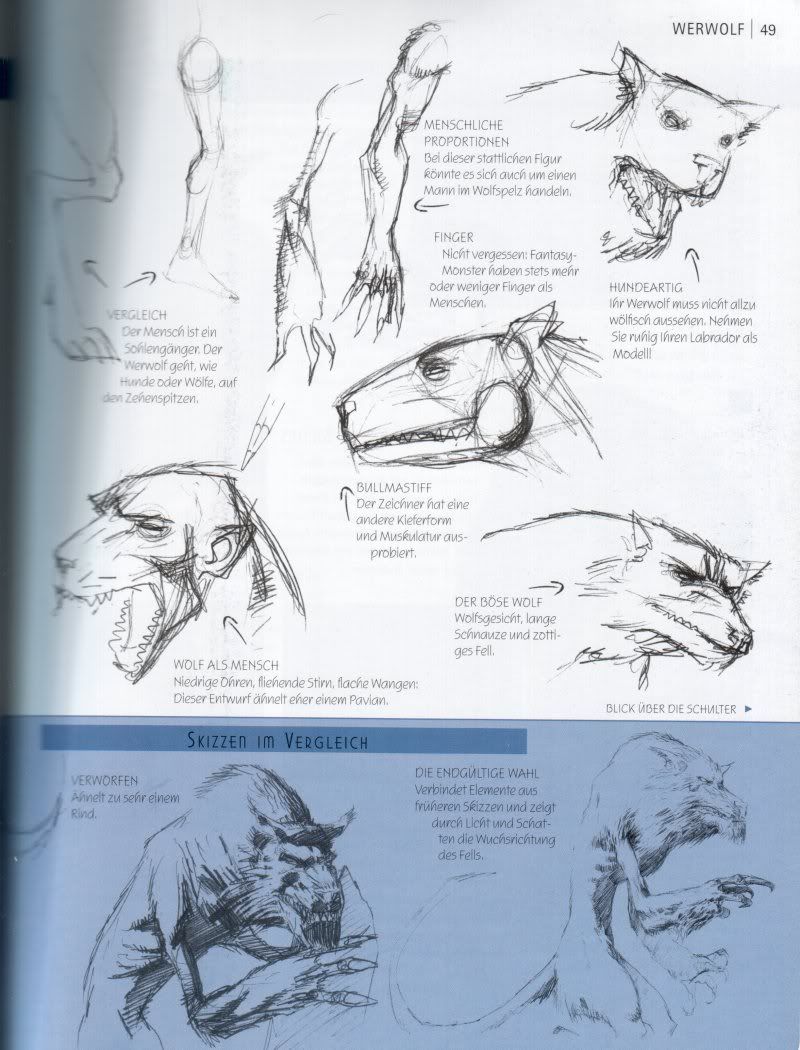
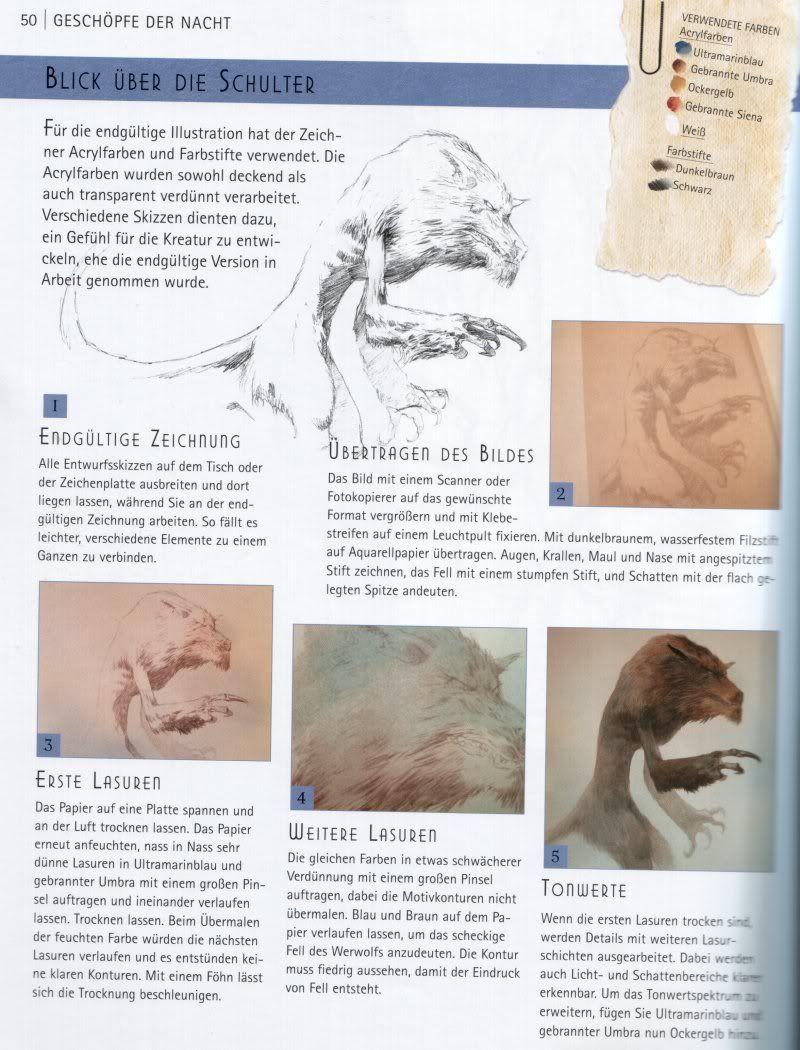
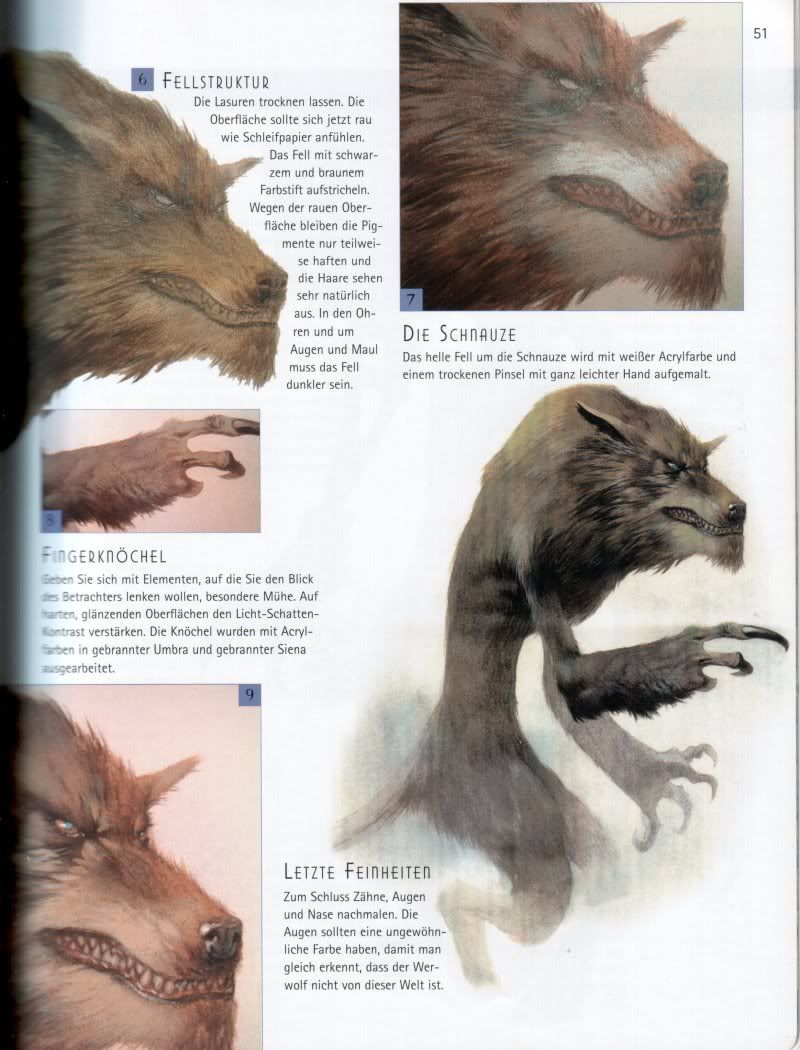
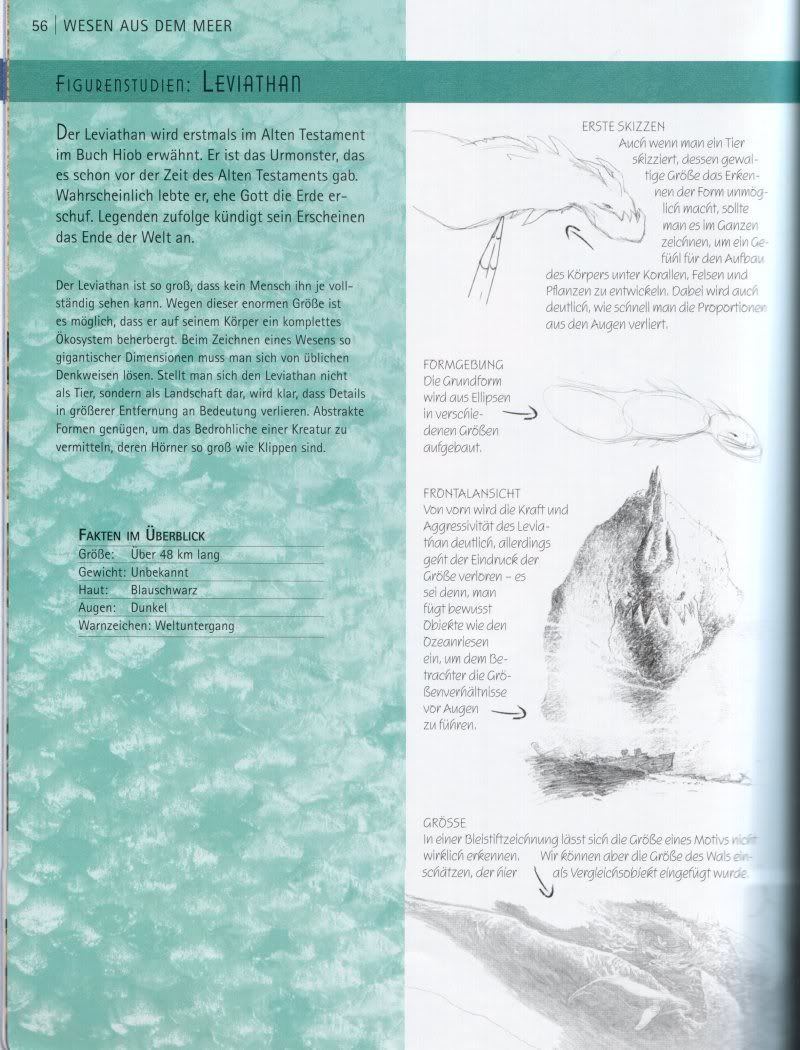
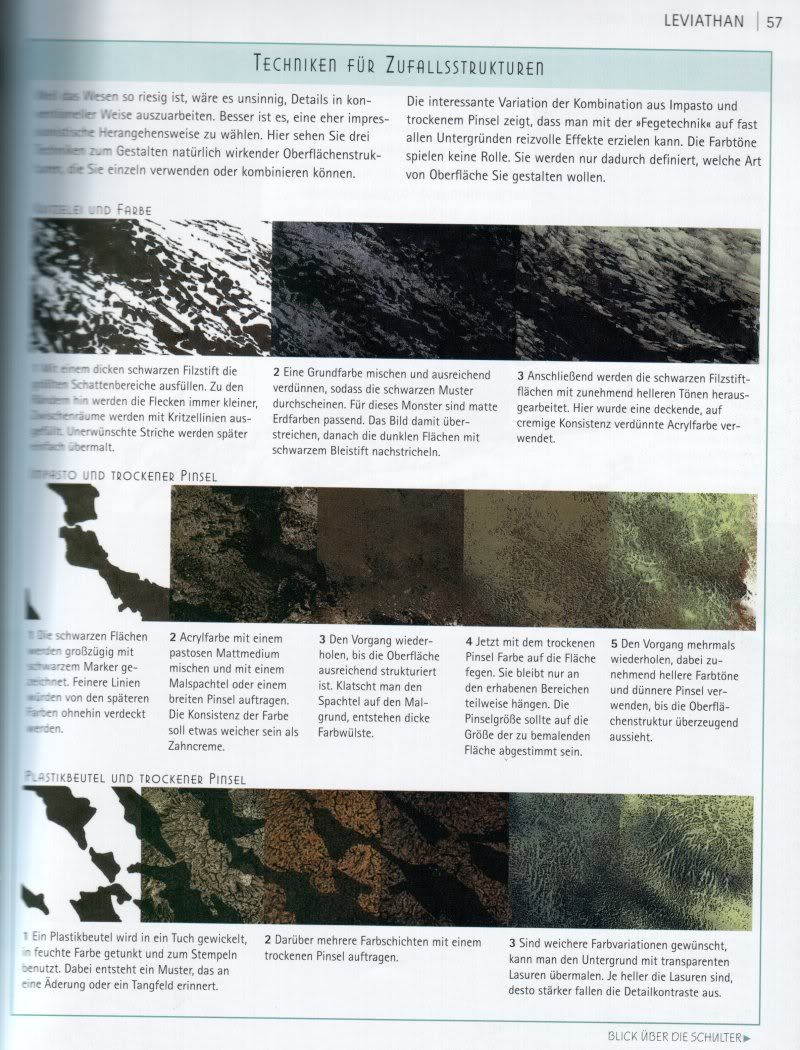
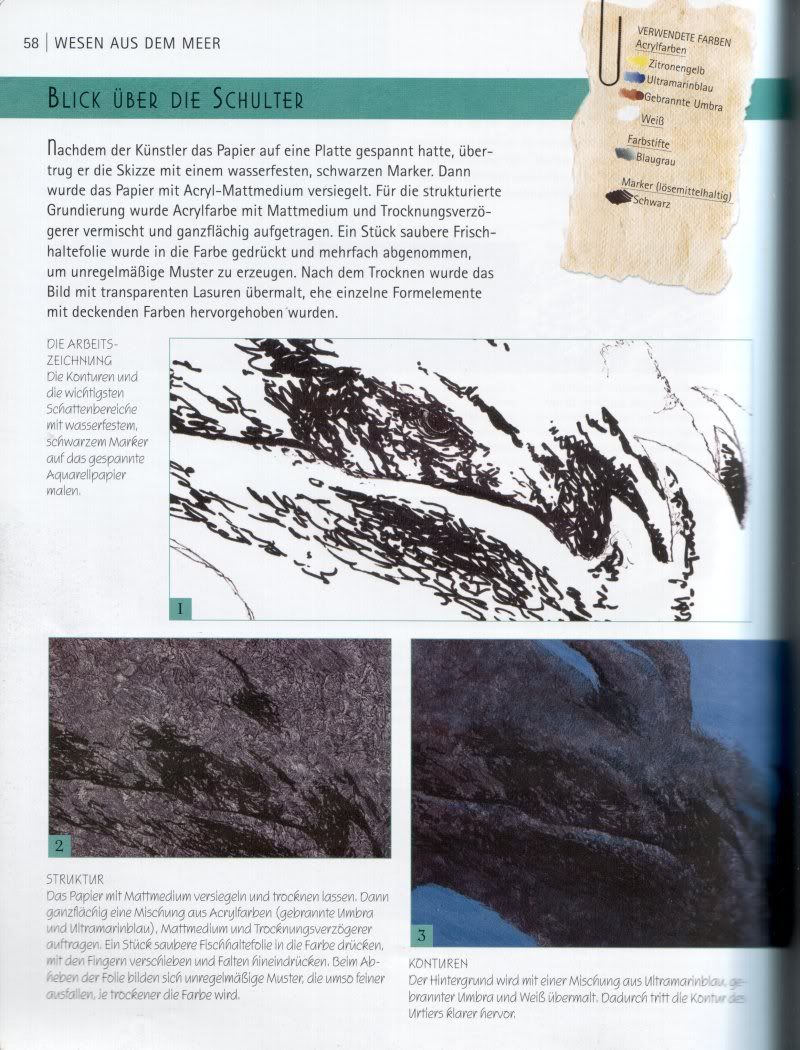
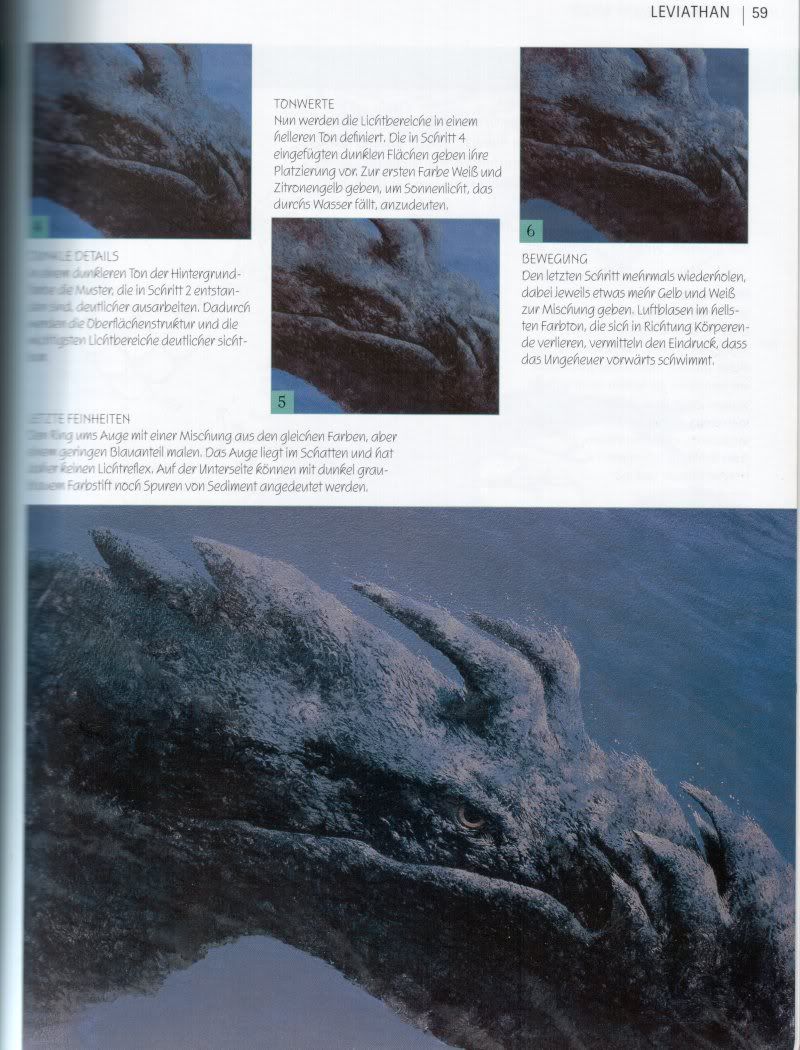
Initially I got it because I had never painted with acrylics, but generally found hobby painting books about acrylics my library had rather useless and boring. I mean, it's not that painting with some new medium was like repairing a motorcycle or any of the other things for which you really need either direct instruction or a book rather than just muddling along, and there's only so much variation to the theme of "you put color pigment on a surface" anyway, but this book has a neat introduction section that just lists different techniques with a little picture of how it looks, which makes it easier to try things than unguided trial and error and I'm lazy like that. Also I wanted to do dragons anyway, and this has examples of fantasy art done with acrylic paint (other techniques too) with step-by-step pictures, so that seemed like a good match.
The first part of the introduction is just the usual list of drawing and painting materials, and rather pointless. Frankly I wonder why nearly every such book feels the need to recap materials in a generic manner at the start. I mean, if you pick up a specialized drawing book you are most likely aware that there's a difference between watercolors, gouache, acrylics and oil paint, and that pastel chalk is different from oil pastels and so on. It's not that I haven't picked up some useful general info from skimming these chapters, because every now and then one will mention something I hadn't know of before, but overall I find them superfluous. Still, the list introducing the materials used is only four pages in this book, so it doesn't dwell, and then the introduction gets more specific with the neatly ordered examples of actually using the materials.
The main part is sections with fantasy beasts sorted by regions in which they supposedly live, and realized in a variety of techniques, both traditional and digital, though most involve acrylics or acrylics mixed with other media. I suspect that if you are already really experienced this book won't tell you much new, but since I've only started using acrylic paint it was useful to have illustrated examples like this for achieving different effects and textures, and getting ideas on what to do, though I have only tried a couple so far.
I've scanned a couple of pages to give you an idea of the way the process descriptions and illustrations look like, though obviously if you don't speak German the text of these scans that explain what was done in each step won't do much for you.







